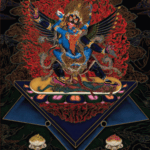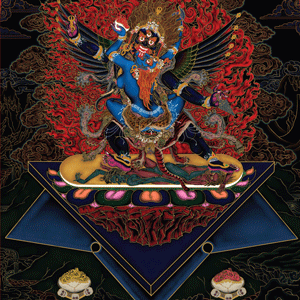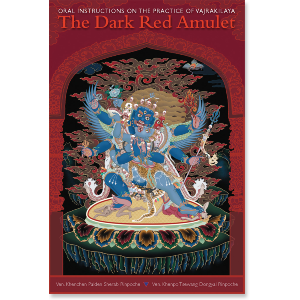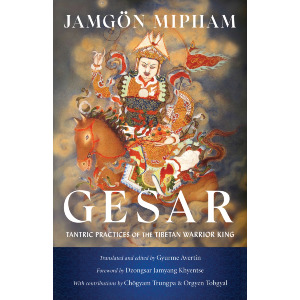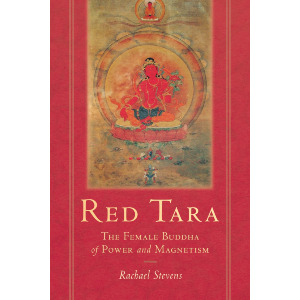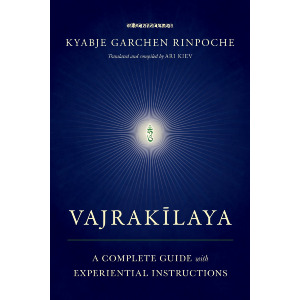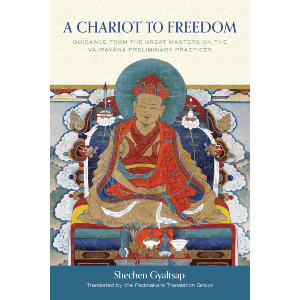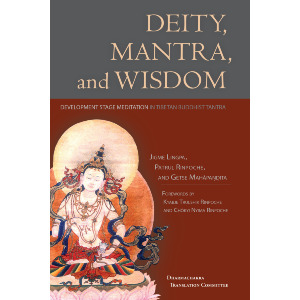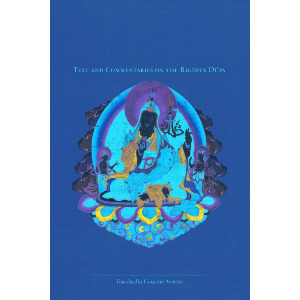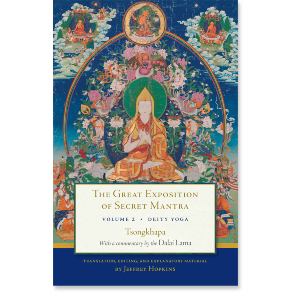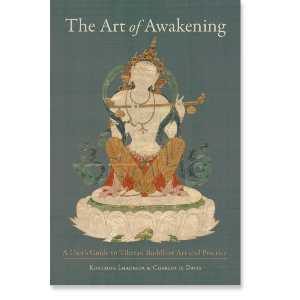The following excerpt is adapted from
In his Dzogchen teachings, Guru Padmasambhava urged his disciples to keep going beyond the boulders on the road of meditation. In Tibet, there are lots of boulders on the roads, but in America, we would probably say “the potholes in the streets.” Experiencing these difficulties is a sign that you are actually moving. Whether the road is smooth or bumpy, it is good that you are moving along. When you begin practices, these obstacles will manifest. At such times, maintain your strength and renew your commitment. You need stability and continuity to overcome these episodes. There are many ways in which signs can occur. Difficult situations can arise externally, internally, and secretly. Externally, things may happen that you did not expect, or things may not proceed the way you want them to. You may find that when one problem is solved, another problem arises.
On the inner level, you might have health problems, discomfort, insomnia, long and involved dreams, and other unusual phenomena. The secret signs show up in the emotions. You may have more expectations and anxiety about the teachings. You may have doubts about the teacher and other sangha members, less certainty about what you are doing, or less compassion than before. These signs do not mean that you are losing the ability to love and be kind. When we come to these rough places in the road, we should always persevere, strengthen our practice, and keep moving toward our goal.
Positive signs of achievement may also occur. Externally, there may be periods where everything goes along nicely. Inwardly, your body feels peaceful and healthy, and it functions well. Emotionally, you feel relaxed, and anger, jealousy, and other emotions do not disturb you as they did before. We should not cling to positive signs, but maintain the ultimate view in every situation from now until we attain enlightenment.
The strongest and most positive signs of achievement—in Vajrakilaya practice, for example—are the three signs known as the body, speech, and mind signs of Vajrakilaya. Among the signs of the body are that the practitioner’s physical form becomes very bright, light, joyful, and peaceful. One has visions, dreams, or direct perceptions of the emanations of Vajrakilaya. Also, one’s phurba on the shrine might spark and radiate light. These phenomena were quite common in Tibet. Almost every monastery had special phurbas that danced on the shrine. These are all signs of the physical achievement of Vajrakilaya.
The signs of the speech achievement of Vajrakilaya involve the practitioner’s speech becoming very powerful and perfect, and one’s expressions of wisdom spontaneously expanding. For example, there are yogis who can write beautiful dharma songs that send special messages to sentient beings. Hearing the Vajrakilaya mantras, such as the syllable HUNG, resounding from the shrine or from trees, mountains, or open space is another sign that one has achieved the speech of Vajrakilaya.
The initial signs of achieving the mind of Vajrakilaya are temporary experiences of joy, peace, and a very relaxed state of mind. The ultimate sign of accomplishing the mind of Vajrakilaya is a perfect understanding of the nonduality of the awareness wisdom phurba and the immeasurable compassion phurba. Boundless compassion arises for all beings while the mind abides in the expanse of wisdom beyond concepts. The moment anything arises, it is liberated in the very space of its appearance. At the same time, unceasing great compassion arises for all beings without any expectation or reluctance.
There are also special signs, such as a pure understanding that the teacher, the teachings, and the sangha are all part of the mandala of Vajra kilaya. Another is the ability to perform the four actions of Vajrakilaya: pacifying, increasing, overpowering, and subjugating. You become efficient at whatever you do.
These are signs of having achieved a measure of the realization of Vajrakilaya. In any case, it is important not to become over-involved with the appearance of signs, whether good or bad, but simply continue to practice and meditate.

